Unlike in 2022, when Anthony Albanese ran a “small target” campaign and there were relatively few significant differences between the major parties’ policy offerings, there are some notable contrasts this time around.
Here are the main election promises made by Labor and the Coalition in the lead-up to the 2025 election.
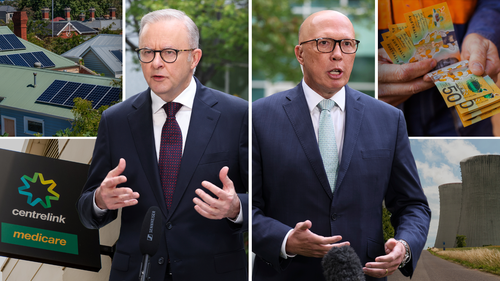
Labor will allow first-home buyers to get into the property market with just a 5 per cent deposit without having to pay lenders mortgage insurance (LMI).
It has also promised $10 billion in funding to build 100,000 properties specifically for first-home buyers, and has matched the Coalition’s pledge to ban foreign investors from buying existing homes for two years.
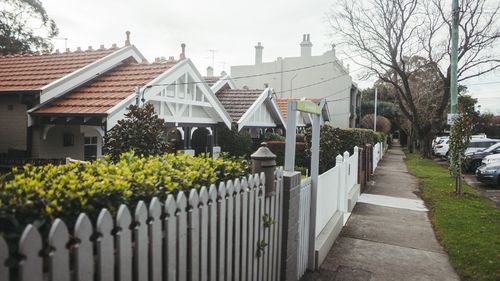
It will also allow people to withdraw $50,000 from their superannuation for a home deposit, and has allocated $5 billion for a fund to speed up essential infrastructure in a move it says will support 500,000 new homes.
It has also promised to ban foreign investors from buying existing homes for two years, scrap the $10 billion Housing Australia Future Fund, and reduce migration intake by 25 per cent.
Tax and cost of living
It has also offered up a temporary tax offset of up to $1200 for low- and middle-income earners who take home less than $144,000. This will only apply for the 2025-26 financial year.
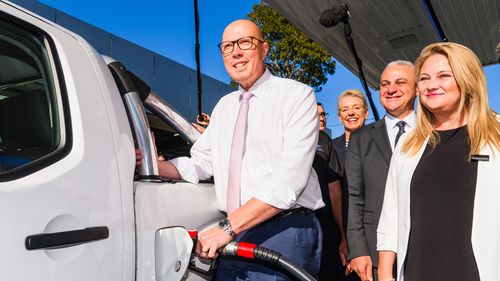
It will continue to roll out renewables to meet Australia’s energy needs, with the goal of solar and wind making up 82 per cent of the grid by 2030, with gas and other fossil fuels “firming” up supply.
Labor has existing emissions reductions targets for 2030 and 2050 (a 43 per cent cut and net zero respectively), but hasn’t committed to a 2035 goal.

The centrepiece of the Coalition’s energy plan is its proposal to construct seven nuclear reactors around the country.
It is also planning to ramp up gas production to meet the energy shortfall in the interim as coal plants shut down and the reactors are built, announcing a $1 billion fund for infrastructure expansion.
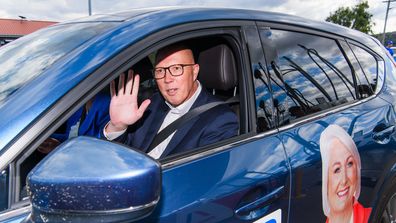
Opposition leader visits 14th servo of election campaign
The Coalition has not set emissions reduction targets. While it has previously talked of scrapping and reviewing Labor’s 2030 goal, it says it is committed to net zero by 2050 and the emissions reduction targets Australia signed up to at the Paris climate conference.
The Coalition has also pledged to repeal the New Vehicle Efficiency Standard, which encourages car makers to produce more fuel-efficient vehicles and penalises companies that exceed a set emissions cap.

Labor has leant heavily into health – particularly Medicare – during the campaign, seeking to target Dutton for his previous stint as health minister.
Labor will also spend $644 million to expand the Medicare urgent care clinic network with 50 new centres, and $1 billion to build or upgrade dozens of walk-in mental health facilities and train 1200 new workers in the sector.
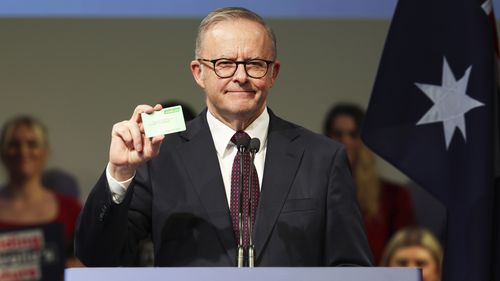
For the most part, the Coalition has matched Labor’s big health policies, promising to back the $8.5 billion Medicare funding and cut to PBS medicine costs.
On mental health, it is promising $400 million for youth services, and will permanently reintroduce the pandemic-era policy for 20 subsidised mental health sessions for people with a mental health care plan, up from the current 10.
Education is another area that Labor has sought to target, particularly in relation to childcare and student debt.
Labor will also continue to provide fee-free TAFE places.
The Coalition will set a target of having 400,000 apprentices and trainees and incentivise businesses to provide those positions.
A focus on workplace policies has somewhat faded as the campaign has progressed.
The Coalition has promised to shrink the size of the public service by 41,000 workers over five years through a hiring freeze, natural attrition, and offering voluntary redundancies.
It is also offering up to $20,000 in tax deductions for small businesses to spend on staff meals and entertainment.
It has previously promised to repeal the right-to-disconnect laws introduced in the last parliament, although has said it would keep Labor’s same job, same pay legislation.
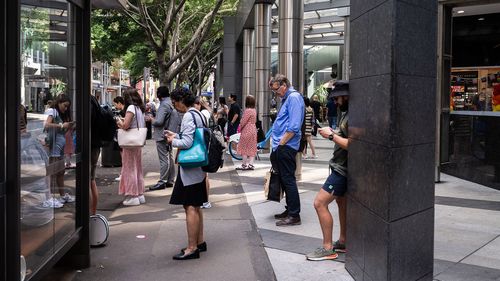
Labor largely wasn’t drawn on the Coalition’s crime announcement, pointing to its own policies it enacted during the last term, including introducing a child sexual offender registry and a crackdown on illegal tobacco being imported into Australia.
The Coalition promised to allocate $750 million in funding for a range of crime policies, including trialling a new child sex offenders disclosure scheme, an AFP strike force to target illicit drugs, and a national antisemitism taskforce led by the AFP.
It also said it would standardise knife laws and roll out detector wands across the country in conjunction with the states and territories.

While defence has loomed over much of the campaign due to the reported Russian request for an airbase in Indonesia, it took until 10 days before election day for a major announcement by either of the parties.
